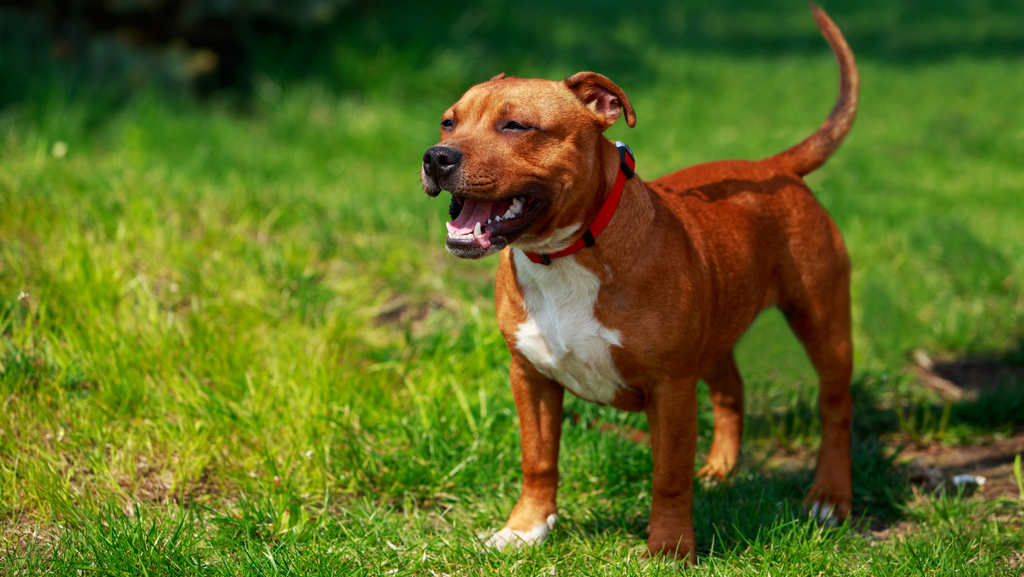The Types of Dog Treats: An In-Depth Look

When it comes to the love language between you and your dog, we bet treats are on the list. Healthy treats offer a valuable reward while your dog is learning and as a way to show your furry best friend just how much you care.
But when it comes to picking out the best treats for dogs, you may find yourself overwhelmed by the selection. You may have even wondered what the difference is between a rawhide treat and a jerky chew. Furthermore, if you’re worried about which treats are the healthiest option, you may find yourself even more confused.
Choosing the right treat for your dog is doggone easy when you understand the difference between the types of dog treats. It’s even simpler when you learn how wildly different treats can be when it comes to their health benefits--or negative effects.
If you want to learn more about dog biscuits, cookies, chews, and more, this article will be a real treat to read.
Why Does the Quality of Your Dog’s Treats Matter
The world of doggy biscuits and snacks can feel like the wild west in some ways. Because owners pay less attention to what goes into their doggo biscuits, compared to their main diet, and some treat companies take advantage and cut corners.
How to Evaluate Treats
The first defence a dog owner can take against bad treats for dog is checking the ingredients. Looking into where the treats are packaged and made can also help you determine if treats are good enough for your dog.
The Good
High-quality treats for dogs will have short ingredient lists that are easy to read [1]. The first ingredient will often be meat and the product will not contain a lot of fillers. One way to think about it is that you want your dog’s treat to taste naturally good.
In addition to the ingredients, look at where the treats were made. Try to choose treats made domestically.
Read more about what makes the best treats for your doggo.
The Bad
Do not buy treats that have questionable ingredients. Some of the most dangerous ingredients include artificial colouring and flavours, corn syrup, sorbitol, BHT, BHA, TBHQ, propylene glycol, and salt. These questionable elements could harm your dog’s health in the long run.
The worst ingredients can lead to behavioural issues, diabetes, excess weight, and even cancer. Just like you want your dog’s treats to be naturally good, you also don’t want them to be artificially flavorful.
Avoid treats made from China, since many pet food products from there have been recalled for subpar safety [2]. And be wary of treats that are made elsewhere and only packaged in Australia. While these may seem safe, their ingredients may have been imported from China.
The last thing you want to do is give your dog positive reinforcement that may wind up harming them years later.
What Are the Different Types of Dog Treats?

With all the latest innovations in the world of dog products, treats have not been spared. You can find massive treats, tiny treats, treats shaped like cartoon characters, and even treats that can keep your dog’s teeth clean.
These large variety can be divided into a few categories based on their purpose, forms, and ingredients.
1. Dental
Dental treats and chews are designed to wipe away plaque and tartar along your dog’s gum line. Most dental treats also freshen your dog’s breath and stimulate the gums. Dental treats come in all shapes, sizes, and flavours.
How Do Dental Treats Really Work?
The secret to an effective dental treat lies in its texture. Most are porous yet dense. Some have ingredients like baking soda or chlorophyll which naturally scrub the teeth [3]. As your dog chews, their teeth will enter and rub along the treat. As they do this, the treat’s pores work like pockets to catch the plaque as the hard texture works to scrape the plaque-free from the teeth.
2. Crunchy, Munchy Treats
Most of the ‘old fashioned’ treats are baked and crunchy. These are often the texture of an over-baked biscuit. Dogs love the crunchy texture of these treats. Crunchy treats are often the least expensive on the market. Unfortunately, many of these treats feature fillers like corn and wheat. It’s also common for them to have artificial dyes and flavourings.
3. Soft
Soft treats are easier for puppies and senior dogs to eat. These treats can encourage dogs with dental issues or sore gums from teething during training or just because. They also give you the opportunity to treat your dog into old age.
They range in quality as well as size and shape. From bright red ‘bacon’ strips to jerky sticks and soft biscuits, this type of treats can wind up being a trap. Keep in mind that most food products harden without artificial preservatives. Before putting them in your trolley, check the ingredients.
4. Freeze Dried & Jerky
Both freeze-dried and jerky treats are a healthy treat option in moderation. They are usually made from 100% real meat. They simply have had their moisture pulled out, making them less likely to encourage bacteria.
Jerky and freeze-dried treats can be made from
- Chicken
- Turkey
- Duck
- Kangaroo
- Beef
- Pork
- Seafood
They can also include organs, pizzles, and ears.
The biggest benefit of natural jerky chew treats and freeze-dried treats is they allow a healthy outlet for your dog’s need to chew. Chewing is a natural outlet for anxiety and energy. Chewing also releases positive endorphins that can make your dog feel great. Jerkies and dried treats also support better dental health.
Note: Rawhide treats are not a form of jerky or freeze-dried treat.
5. Hooves & Antlers
Dog-safe animal bones and hooves are extremely long-lasting, aromatic, and flavorful for dogs. They let your dog chew and chew and chew some more. As your dog chews on a hoof or antler, they produce extra saliva, which rinses their mouth as the hard surface of the treat works away the plaque.
6. Rawhide
Rawhide treats are a by-product of the leather industry. Other than artificially tasting great and sometimes being formed into cute or interesting shapes, they’re not beneficial to dogs.
The chemical process of making rawhide requires a lot of chemicals, including bleaching agents [4]. They also pose the risk of bacteria as the result of decomposition. In addition to harmful chemicals, rawhide is known for not breaking down during digestion and posing a choking risk.
7. Homemade & Human Foods
Human foods can be either healthy or detrimental. Some healthy choices include carrots, green beans, blueberries, and coconut. Of course, they should only be given to your dog in moderation. You can also make homemade treats for your dog using a combination of dog-safe ingredients.
Steer clear when it comes to processed foods or common dog toxins. These can make your dog gain weight or even have a serious allergic reaction. Never let your dog eat raisins, grapes, garlic, chocolate, or xylitol.
8. Special Diet
Some dogs have dietary restrictions due to allergies or medical conditions. For these sweet puppers, they can enjoy treats made especially for them.
These can include:
- Low calories or weight-loss treats
- Grain-free treats
- Low glycemic index treats
- Hypo-allergenic treats
- Poultry-free treats
- Treats with added vitamins or protein
9. Training
Training treats come in a wide variety of flavours and textures. They’re often the size of a pea and will only take your dog a second to consume them. They’re primarily used for reinforcing good behaviour during training lessons. They can also be used for scent games to prevent boredom or as a lower-calories option to regular-sized treats.
What Type of Treats Do Dogs Prefer?

Dogs, like people, have preferences based on their own tastes. Some dogs love carrots for instance while others will turn their noses up at them. This is why some dogs are extremely food motivated while others are not.
For the most part, though, dogs love treats with rich flavour and a distinct aroma. That’s right. Dogs love stinky treats. Fish-flavoured treats and peanut butter treats are often considered high-value treats because dogs find them irresistible.
Many dogs also prefer treats with a real-meat texture or that take time to chew.
How Do I Choose The Right Treats For My Dog?
The easiest way to determine the best treats for your dog is to first select treats that are healthy. Second, let your dog try a variety of treats over the course of a few weeks or months and note which they get the most excited about. Watch for perked ears, alert eyes, and a wagging tail. You can also test this by seeing what commands your dog is willing to perform to earn the treat.
It’s always a great idea to keep a variety of treats on hand and give your dog one or two dental treats per day to keep their mouth clean and breath fresh.
You Dog Deserves the Best Treats
Your dog is a good boy or good girl that deserve treats that are going to be good for them. When selecting your dog’s treats, always check the label for ingredients and origin. Buying from a reputable company also ensures your dog is getting the best treats on the market.
At Petzyo, we make finding the best treats for your dog easy. We only select the healthiest, most beneficial treats to sell alongside our top-rated dog food. Check out our selection of healthy treats that will surely make your dog’s tail wag.
[1] The Top 5 Benefits of Natural Organic Pet Food for Your Dog
[2] Dog Food Recalls & Warnings






